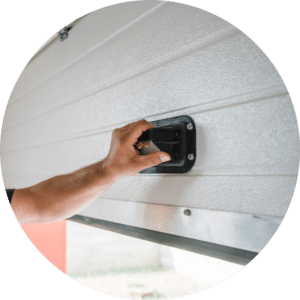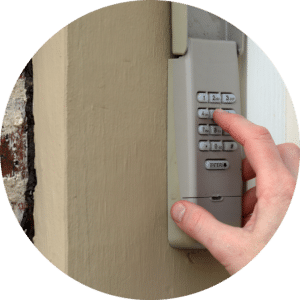


A garage door lock is a security device designed to secure your garage and prevent unauthorized access. It serves as an additional layer of protection for your home and belongings stored in the garage. Garage door locks come in various types and styles, offering different levels of security and convenience. Understanding the options available and how they work can help you choose the right lock for your garage door.
Garage door locks come in two main categories: manual and automatic. Each type offers its unique features and mechanisms, catering to different preferences and security needs. Let’s explore both manual and automatic garage door locks in detail:


Yes, you can replace a garage door lock, and it’s a task that can be accomplished with the right tools and some DIY skills. Here’s a general outline of the steps involved in replacing a garage door lock:
Replacing a garage door lock is a relatively straightforward DIY project, but it’s essential to follow safety precautions and accurately measure and install the new lock. If you’re not confident in your DIY skills or encounter any challenges during the process, it’s advisable to seek professional assistance to ensure the lock is installed correctly and provides the necessary security.

Proper maintenance of your garage door lock is essential to ensure its longevity and reliable performance. Here are some maintenance tips to keep your garage door lock in good condition:
By following these maintenance practices, you can extend the lifespan of your garage door lock and ensure that it continues to provide reliable security for your garage. Regular upkeep helps prevent issues and ensures that the lock functions correctly when needed.
The choice between manual and automatic garage door locks depends on your preferences, security requirements, and the type of garage door you have. Consider the following factors when selecting a garage door lock:
Ultimately, the choice of a garage door lock should align with your security priorities and lifestyle preferences. Whether you opt for a manual lock for its simplicity or an automatic lock for its advanced features, securing your garage door is essential for the safety and protection of your home and belongings.
Superior Garage Door Repair
(888) 342-6664
247superiorgaragedoor.com
Copyright © 2017-2023 Superior Garage Door Repair | All rights reserved.
